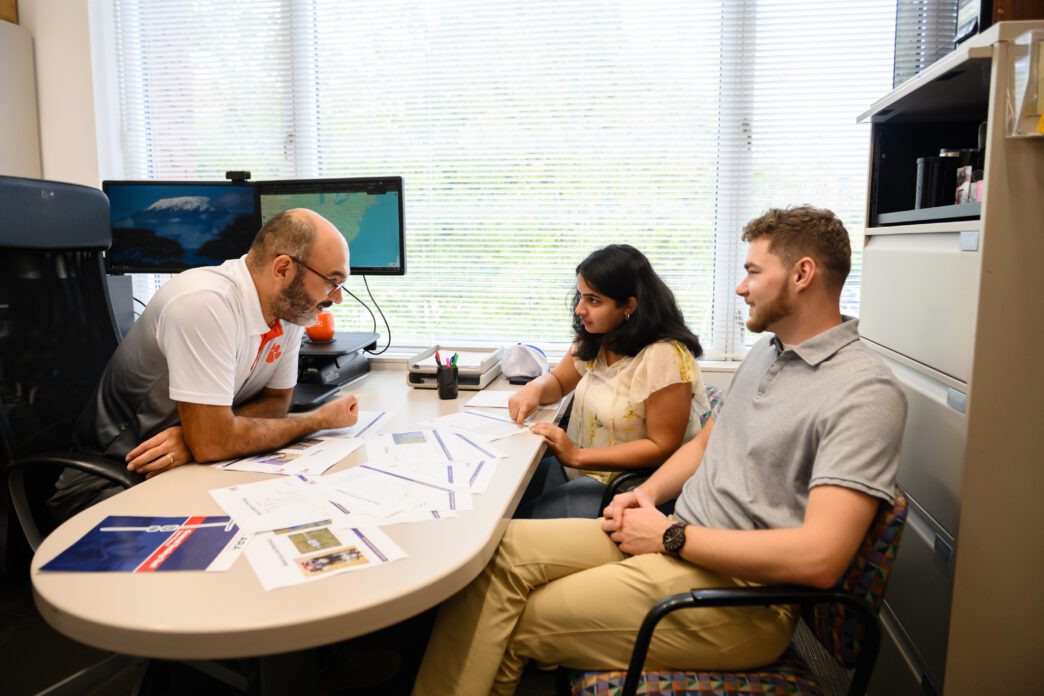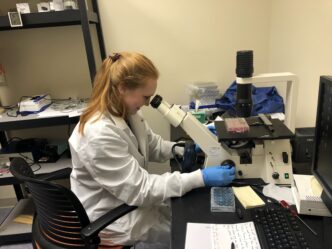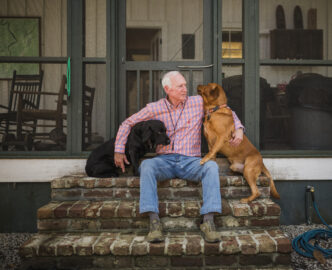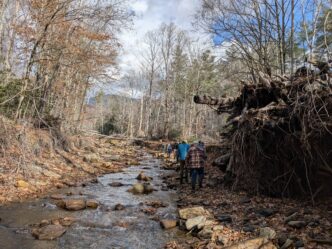Manasi Shah and James Bentley Bevis were both Clemson University students when they climbed into a Chevrolet Suburban to travel to 25 strategically chosen locations in South Carolina, North Carolina and Georgia.
Their mission: test how well the soil holds tent stakes, help develop new staking guidelines and help validate a new ground-testing tool that recently became available for purchase through the American Rental Association.
Because of their work, the next time you go to a tailgate party, wedding or other event with a tent, you just might be safer.
The project is one example of how Clemson partners with industry to give students hands-on experience while solving real-world problems.
“I really liked that I got so much experience in the sense that I could relate experimental data to practical applications,” said Shah, now a Ph.D. student in mechanical engineering.
“I also feel like this project aligned perfectly with my research, and I learned a lot about how to conduct research.”
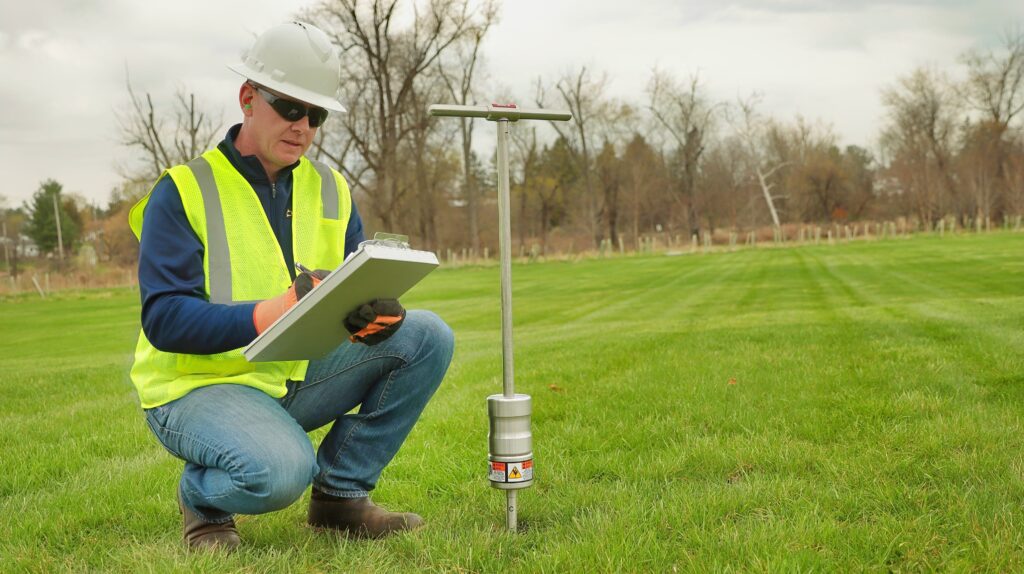
The tool is designed to give tent installers an estimate of how much holding power a standard 40-inch stake will have in different soil types, allowing them to test sites before installation. It’s part of the Safe Tenting program to set new standards for tent safety.
Shah and Bevis conducted the research in 2022-23, working with their advisor, Rodrigo Martinez-Duarte, an associate professor of mechanical engineering, and Kevin Gern, vice president of advocacy for the American Rental Association.
Bevis said the project started as something to do in the summer between receiving his Bachelor of Science in mechanical engineering and the start of his master’s program in the fall, but it became more than that.
“Looking back on it, I think it did reinforce values that I have now in my career,” Bevis said. “One is the impact on safety and the betterment of people as a whole. Now I work at Michelin as a safety engineer, and a lot of the projects I work on are aimed at improving safety or trying to improve people’s lives.”
Over the course of the project, the team visited parks and other sites from the Lowcountry to the mountains with different soil types to test the tool.
At each location, they drove stakes into the ground, measured how far the tool penetrated after a set number of drops, and then pulled the stakes out to record their holding strength.
They compared those numbers with moisture readings and penetrometer data to create a reliable testing protocol that tent installers can now follow to more accurately estimate the required number of stakes to safely install a tent.
Martinez-Duarte said he was proud of Shah and Bevis.
“It was a lot of work, and they were very patient,” Martinez-Duarte said. “I would say, ‘Well, you need to go out and do it again– we need less variability in the measurement protocol.’ That patience was very well appreciated.”
The American Rental Association turned to Clemson for the testing because the University had previously worked with the association and had the expertise to scientifically validate the tool.
“It was a fantastic experience working with Clemson,” Gern said. “Their team brought the scientific rigor we needed to validate the tool and make sure it would deliver accurate, reliable results for the industry. The collaboration was seamless, and their expertise played a huge role in turning this idea into a proven solution.”
Along the way, the team’s field experience led them to suggest several design improvements, such as making the handle removable and adjusting parts that were prone to wear. Their feedback helped refine the tool beyond the original testing scope.
Next steps could include developing an app that would let users log their test results to create a national soil map and help verify that tests are done correctly, Martinez-Duarte said.
Alexander Leonessa, chair of the Department of Mechanical Engineering, said the project exemplifies what Clemson does best.
“It was a fantastic hands-on experience for our students and a great example of how collaboration with industry can lead to real-world impact,” Leonessa said. “Projects like this help us create the nation’s No. 1 student experience while making a positive difference in South Carolina and beyond.”


